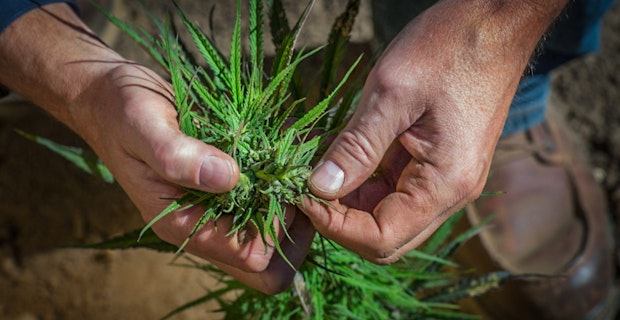It’s hard to open any agricultural website at the moment, or even LinkedIn or Twitter for that matter, without reading about the rising trend of hemp cultivation in the US. Hemp was legalized in the farm bill that President Trump signed into law at the end of last year. Individual states have been following suit with Ohio Governor Mike DeWine the latest to sign a state hemp bill into law at the end of last month. So, what does this mean for precision agriculture? What place does technology have in the growing process of hemp?

I think we’ve all seen the videos of hemp getting planted (or transplanted) in June and July and a multitude of technologies can be used for this it seems. Depending on whether the crop will be irrigated or not, specific variety and purpose of the crop (oil or fiber), row width, plant rate and other factors will differ widely. After planting is finished, the actual crop-management strategy starts, which is when producers start to have a lot of questions stemming from the lack of research and growing experiences in the last 70 years, according to Heather Darby in the Scientific American.
Research and trials are important for the success of growing any crop and hemp is no exception; hemp differs from other crops in that until the recent legalization, there hasn't been much scientific research to explore different cropping strategies. Still, many producers are enticed to grow hemp due to the lucrative nature of the crop and sustainable versatility, even if they don’t have experience or have limited third-party advice available to do so.

I have been talking to a number of hemp producers in the Pacific Northwest over the past couple of months and all of them mentioned that they feel like they are doing a lot of the trialling themselves on their hemp blocks. Instead of being able to rely on research publications and other resources, they told me they started with their best ‘educated guess’ and then record exactly what happens to each block of hemp. It is here that I see a great opportunity for digital agriculture: helping producers accurately record how they grow their crops (hemp in this case) with different strategies so comparisons can be made, and best practice uncovered.
This is also in line with the trend we saw at InfoAg this year: Ag Data is becoming more important to crop production and focus is shifting from imagery or other stand-alone information sources to a more holistic data-driven farming approach. Producers, as well as agronomists, are increasingly becoming aware of the shortcomings of just writing crop-input and management information down on paper, or using excel spreadsheets and are looking for better ways.

Got what it takes to join the Agworld team? We’re looking for talented individuals to help us deliver innovative solutions in agriculture.
What the hemp industry is showing is that a standardized way of recording information that can lead to improved reporting and a quick and easy way to compare ‘apples to apples’, which is a tremendous support for the profitability of producers. When it comes to fertility and pesticide inputs, there is no standardized and widely accepted body of research available for hemp as we have for corn, cotton and soybeans for example, but digital tools enable producers and agronomists to expedite the search for their best management practices.
So, does the hemp industry have to be treated differently when it comes to Ag Data? I don’t think so, in the end: any data platform should be able to handle data for most crops without problems. Where I think that Ag Data can make a big difference is by helping producers and agronomists learn about cultivating hemp rapidly and providing them with data that helps them in making the most profitable decisions in future seasons. In the end, learning is a process that takes time, but with a high-value crop like hemp, it definitely helps when this learning process can be expedited!





